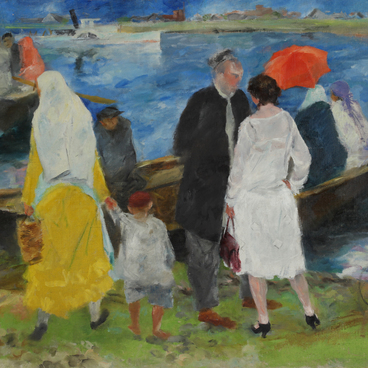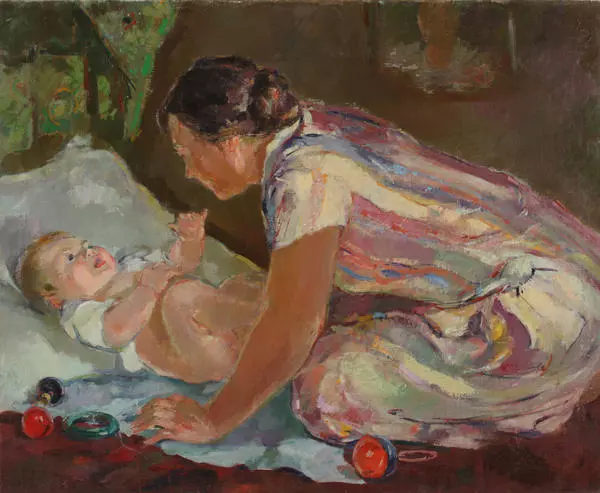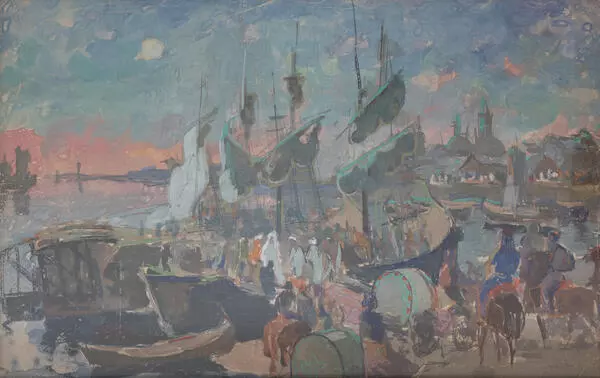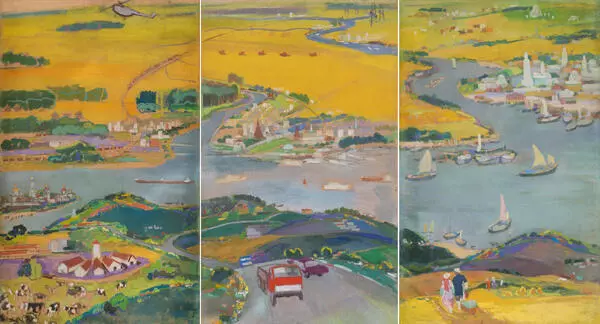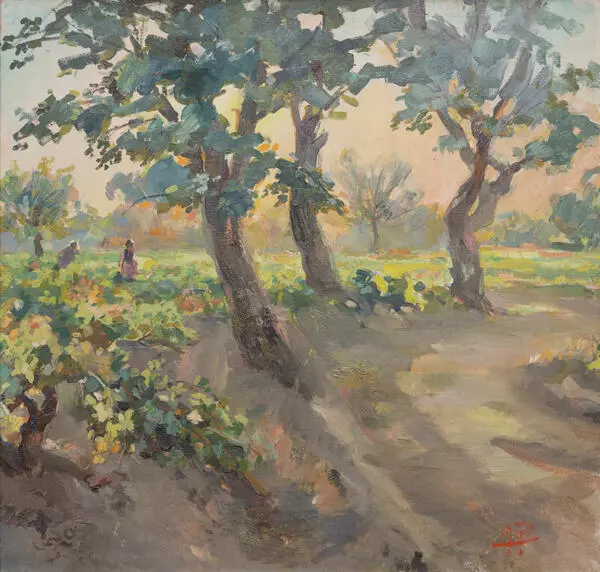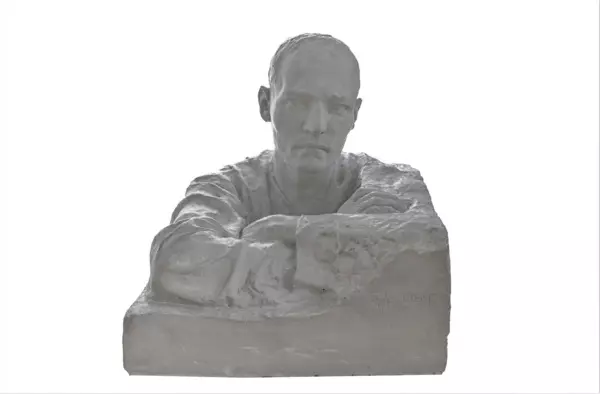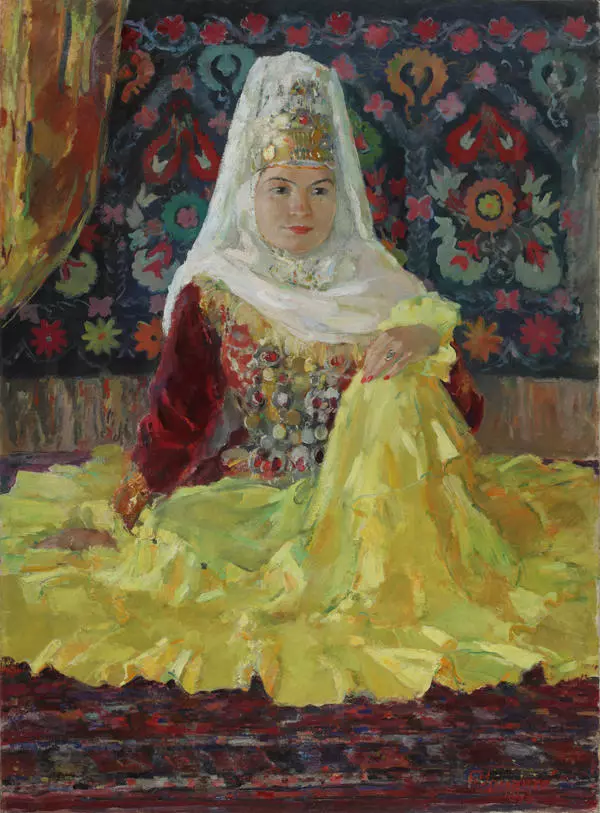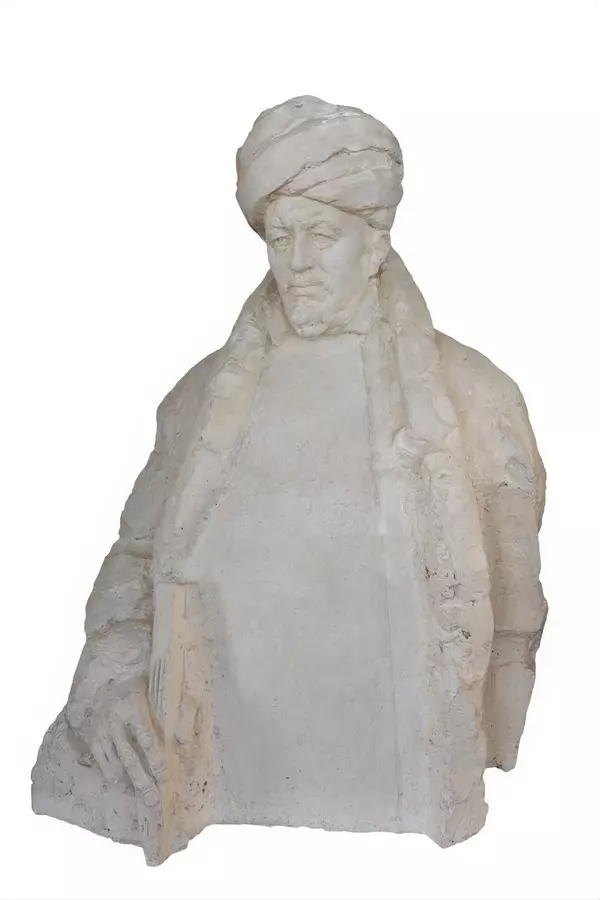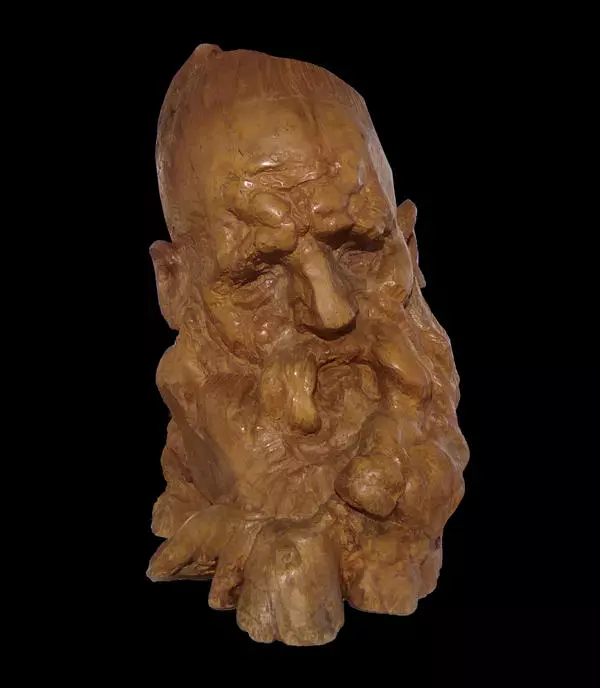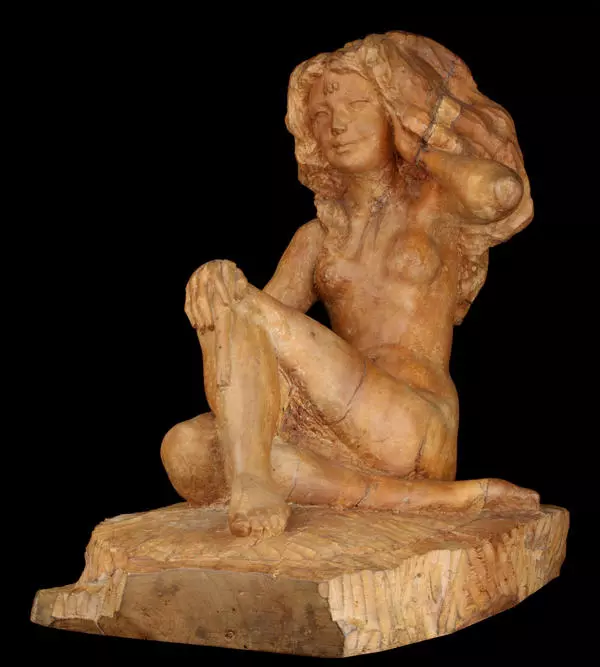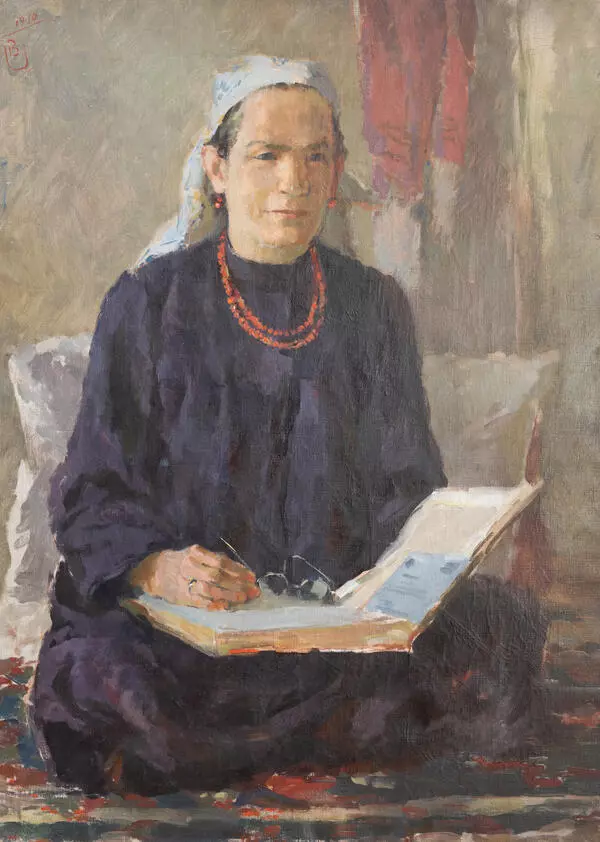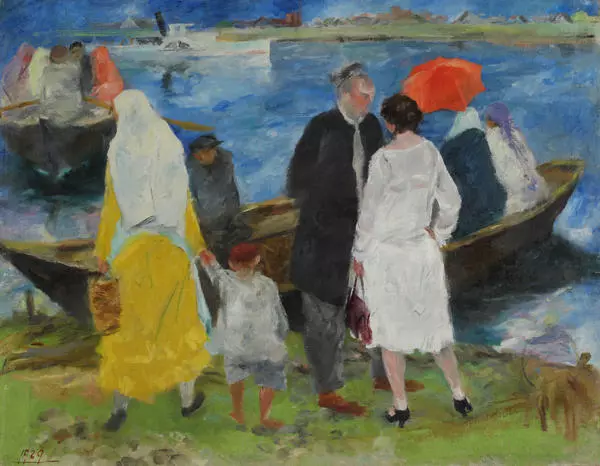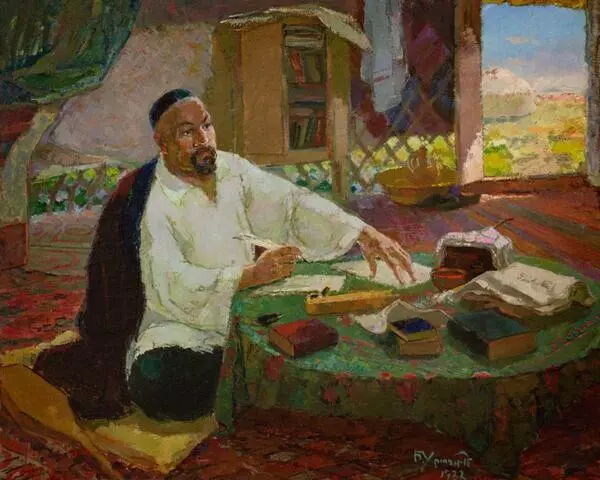Since his childhood, Baqi Urmanche had been surrounded with craftwork items, and started painting and modelling figures of animals in his early years. His mother was an embroideress, and his father dyed fabrics. His love for colorful pieces of popular craft is reflected in the painting At the Separator. In the background, the artist painted drapery typical for traditional Tatar homes. It is a patchwork fabric created for making curtains, bedspreads and quilts.
The color accents, red, pink, white, green and yellow, allude to popular art, to the colors of traditional Tatar clothes. Those bright colors create a joyful, festive mood. Urmanche had an eye for poetry in everyday life, in its most commonplace aspects.
The artist painted a woman who is taking a few minutes’ break from her work in the kitchen. The image is so clear that we can see right away that she is a woman that earns her living by working, with a calm but determined character, a good housewife that can handle any work. Her eyes looking downward, her closed lips and the color in her cheeks reflect the mentality of a Tatar woman of those times: she is modest, shy and serious, despite her youth.
The color accents, red, pink, white, green and yellow, allude to popular art, to the colors of traditional Tatar clothes. Those bright colors create a joyful, festive mood. Urmanche had an eye for poetry in everyday life, in its most commonplace aspects.
The artist painted a woman who is taking a few minutes’ break from her work in the kitchen. The image is so clear that we can see right away that she is a woman that earns her living by working, with a calm but determined character, a good housewife that can handle any work. Her eyes looking downward, her closed lips and the color in her cheeks reflect the mentality of a Tatar woman of those times: she is modest, shy and serious, despite her youth.

